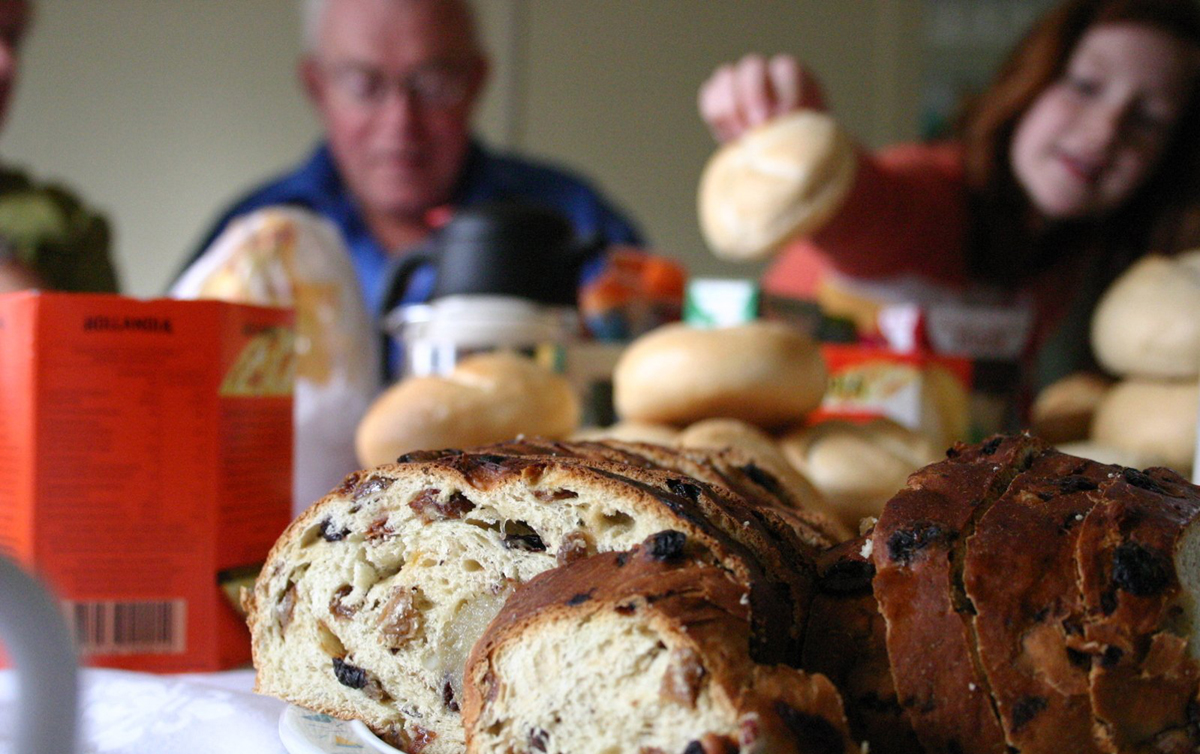
Family mealtime is worth the effort
By Julene Reese
Picture this: It’s family mealtime, and the family is sitting around a meal at the table. Children and parents share events of the day. Talking and laughing can be heard because there is no sound of television, video games, or phones.
Now think about what might be more realistic: Perhaps people stand at the counter with the TV on, quickly grabbing something to eat before they dash out the door. Or maybe everyone eats alone at different times as they race around to and from different events.
Not surprisingly, with hectic schedules and little time, many families fall into the latter category.
September is National Family Meal Month, a great time for families to make renewed efforts to enjoy family mealtime and the benefits of conversing and eating together.
According to a 2013 Harris poll, only 30 percent of American families share dinner every night. With busy schedules and juggling responsibilities, getting everyone together to eat can be a challenge. But research shows that it is definitely worth the effort.
According to the National Center on Addiction and Substance Abuse at Columbia University, compared to kids who have fewer than three family dinners per week, children and teens who have frequent family dinners are:
—At 70 percent lower risk for substance abuse.
—Half as likely to try cigarettes.
—Half as likely to try marijuana.
—One third less likely to try alcohol.
—More likely to get better grades in school.
—Less likely to have friends who drink alcohol and use marijuana.
—More likely to have parents who take responsibility for teen drug use.
From a nutritional standpoint, children who regularly eat meals with their families eat more fruits and vegetables and less saturated fat than children who do not, according to the American Dietetic Association.
Casey Coombs, Utah State University Extension assistant program director for Food Sense, said that making meals in your own kitchen gives you the opportunity to choose exactly what your family eats.
“Cooking at home allows you to increase the nutritional value of meals by incorporating a variety of healthful foods while also reducing nutrients of concern including sodium, added sugar, and saturated and trans fats,” she said. “Improving the nutritional value of your meals can result in long-term health benefits for the entire family.”
David Schramm, Utah State University Extension family life specialist, said that eating together can benefit all families, no matter how big or small. Newlywed couples whose regular complaint is balancing jobs, school, and togetherness time can greatly benefit from enjoying mealtime together. In addition, once the couple gets into the pattern, they will more likely keep it going after having children.
“A wise professor once told me that the purpose of the task is to strengthen the relationship,” Schramm said. “With that in mind, the ultimate purpose of family meals is not just to eat but to eat together, talk, listen, and share. It’s important to turn off screens — phones and TVs — to focus on relationships. And it starts with meal prep together, even shopping together, and then cooking together as well as the clean up after. These are all opportunities to talk, not necessarily about food but about life and relationships. Eating together helps foster a sense of connectedness in the family and provides an ideal setting for adults to encourage positive communication and social skills in their children.”
According to LaCee Jimenez, Food Sense social marketing and eligibility coordinator, Food Sense has implemented a campaign called “Create Family Mealtime” to help families with busy schedules and tight budgets learn how to have successful mealtimes.
“If eating meals together is a new endeavor, it is important to be realistic and set a goal all family members agree on,” Jimenez said. “If dinner isn’t the best option, perhaps having family breakfast might work better. Be sure to schedule a regular time for whichever meal you choose so family members know what to plan on, and include everyone in the meal preparation and clean up. Have family members check electronic devices at the door so there are no distractions. Also, keep the conversation positive, and try to involve everyone.”
To encourage making family mealtime a habit through September and beyond, Food Sense provides quick tips, meal plans, and a recipe book. These tools are available through Utah Food Sense and Eat Well Utah.
Jimenez said that those who want to pledge to having more family meals in September and beyond can go to their local USU Extension office to pick up a free menu-planning and shopping-list notepad while supplies last.
For more information about Create Family Mealtime and Create Better Health, visit createbetterhealth.usu.edu. For information about upcoming classes taught by certified nutrition education assistants in your area, contact your local USU Extension office.
Julene Reese is a public relations specialist for USU Extension.



